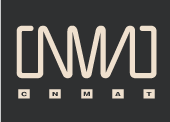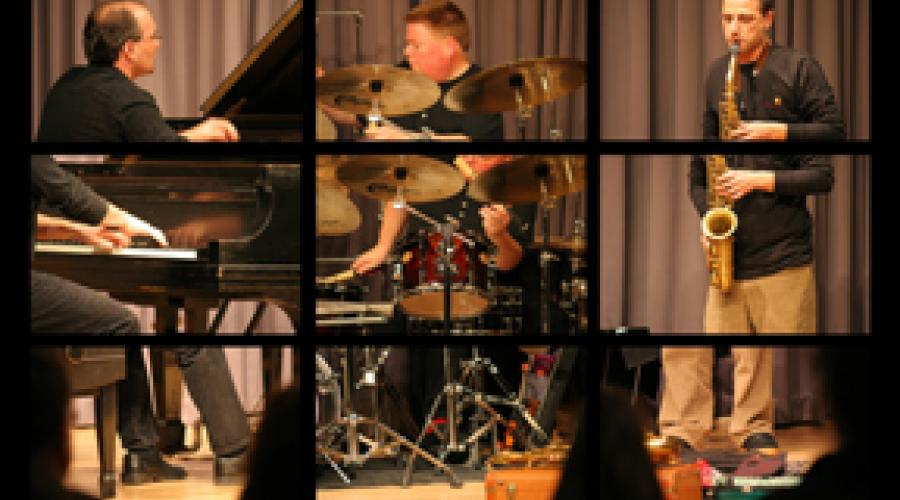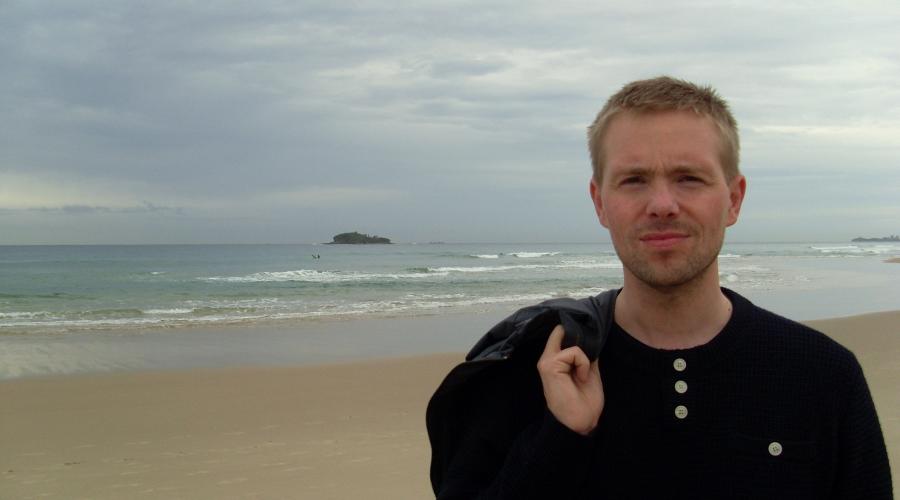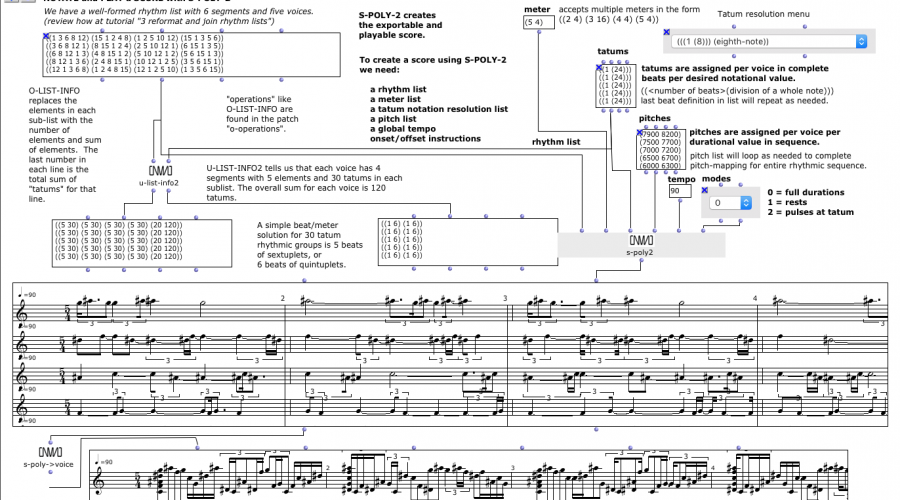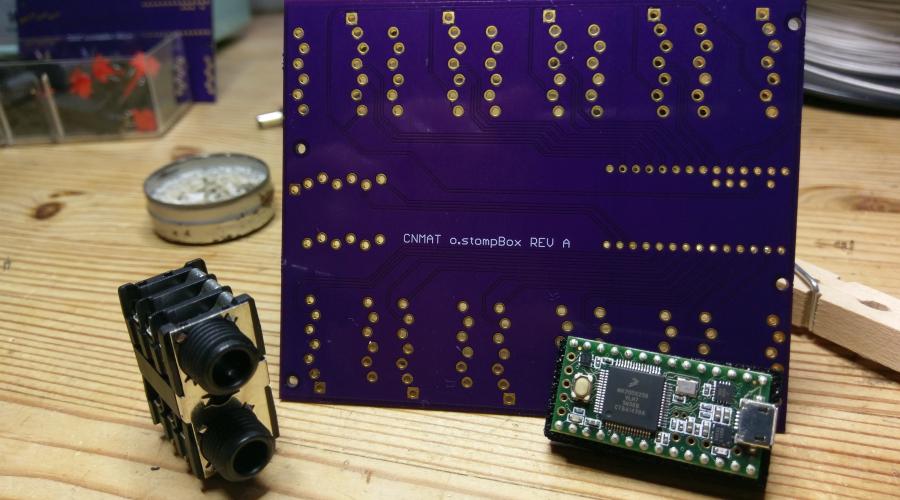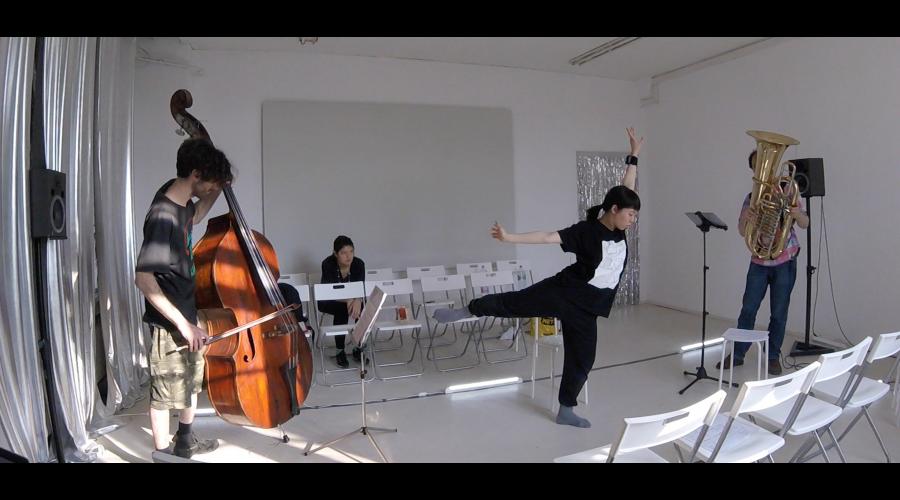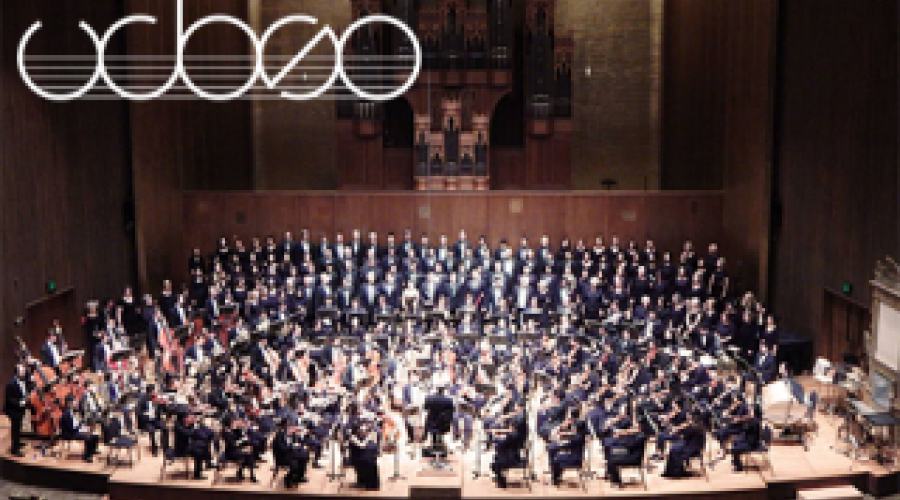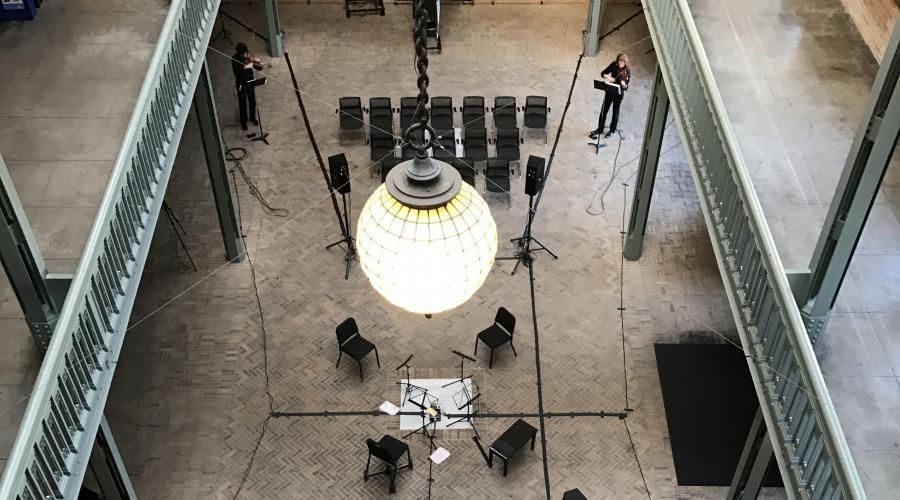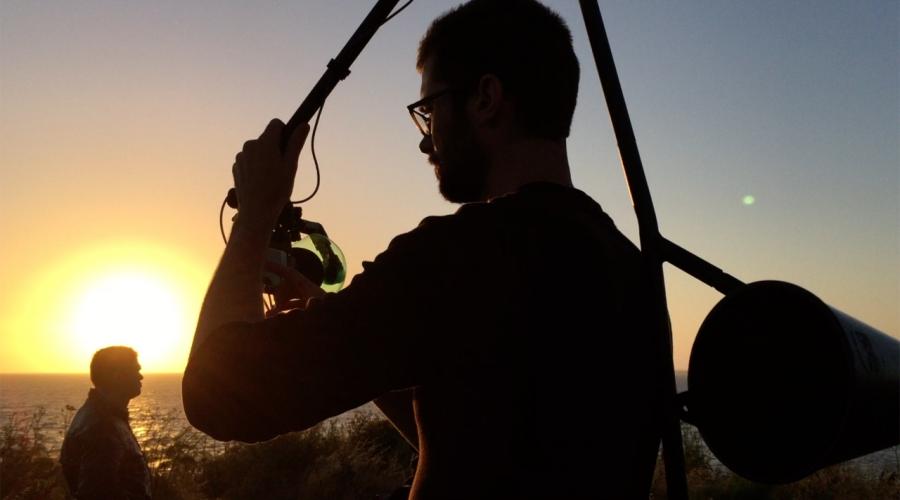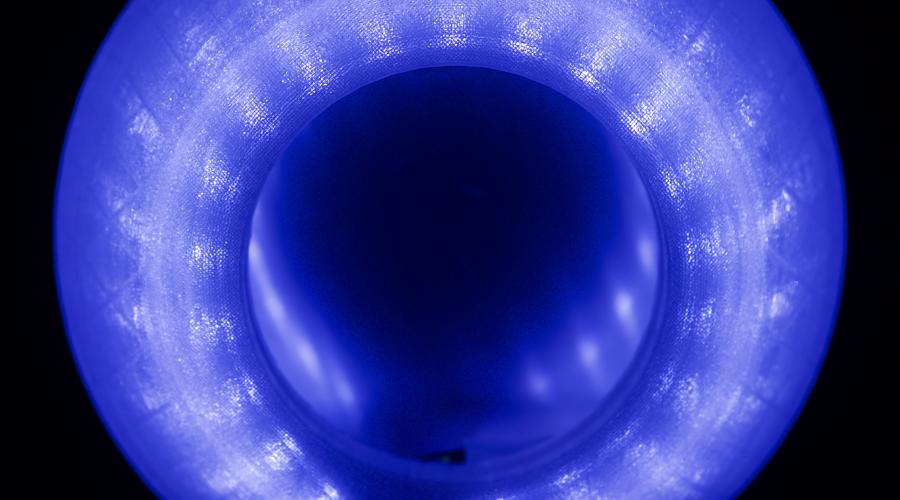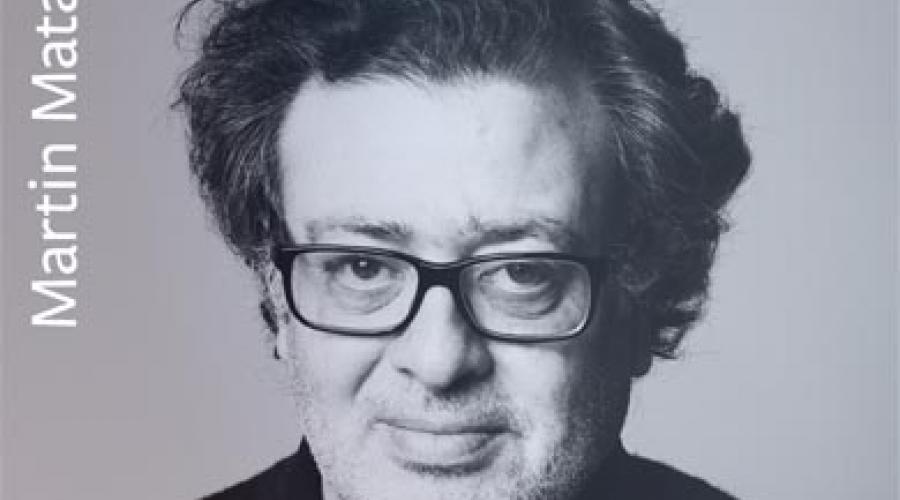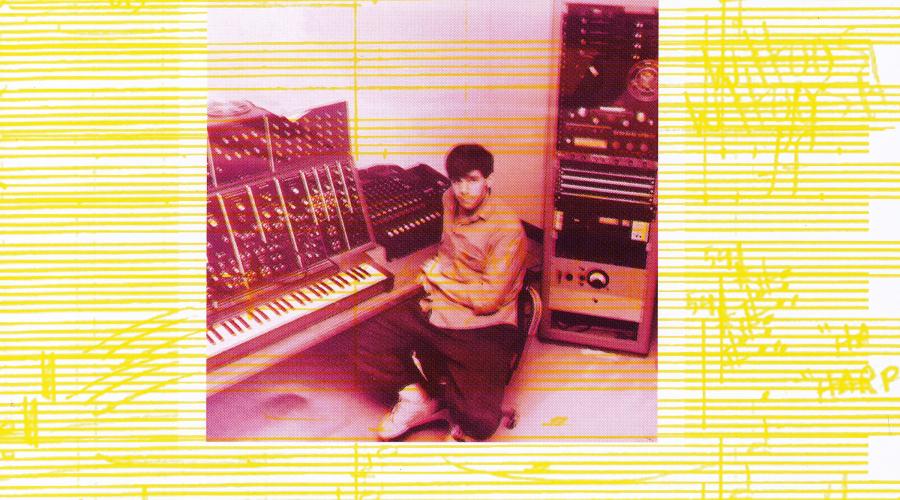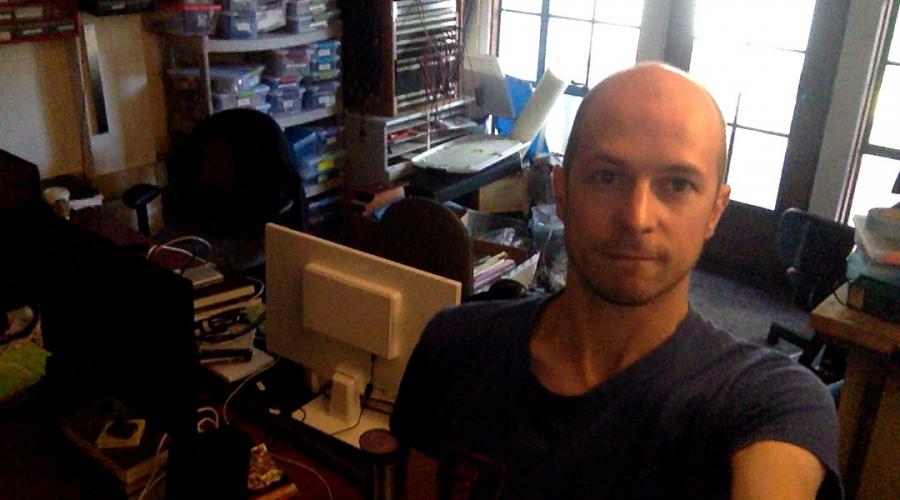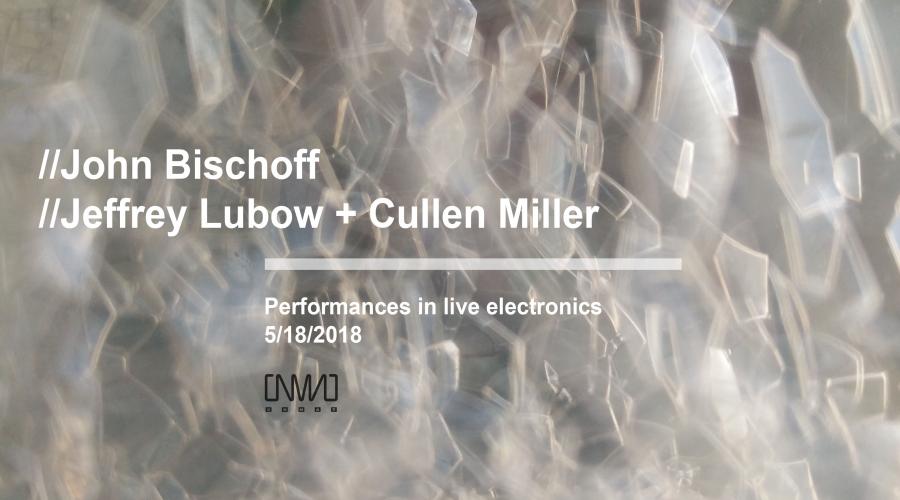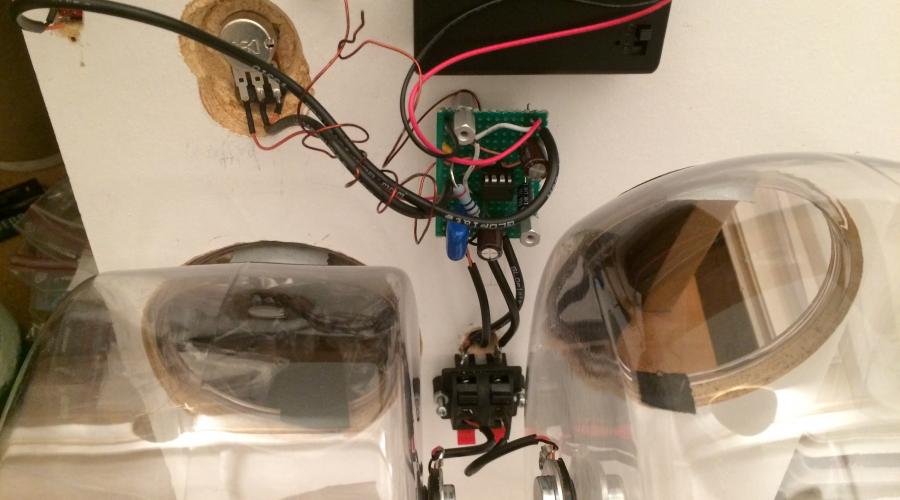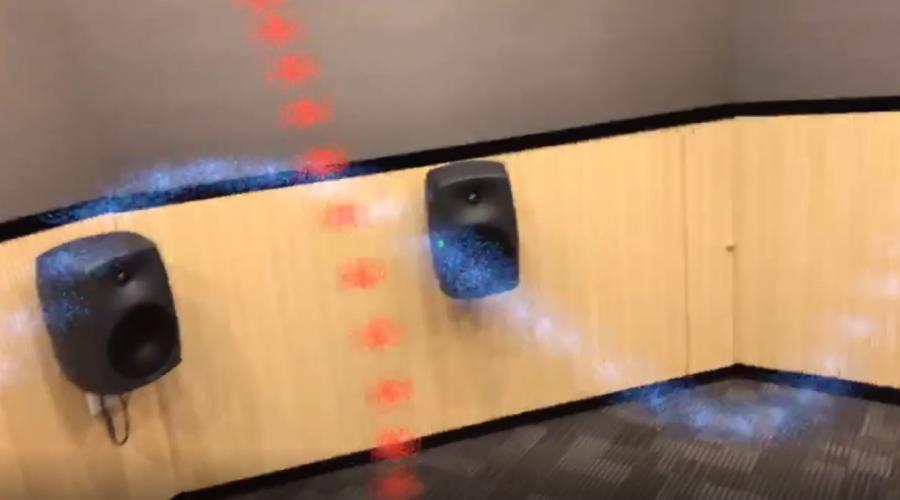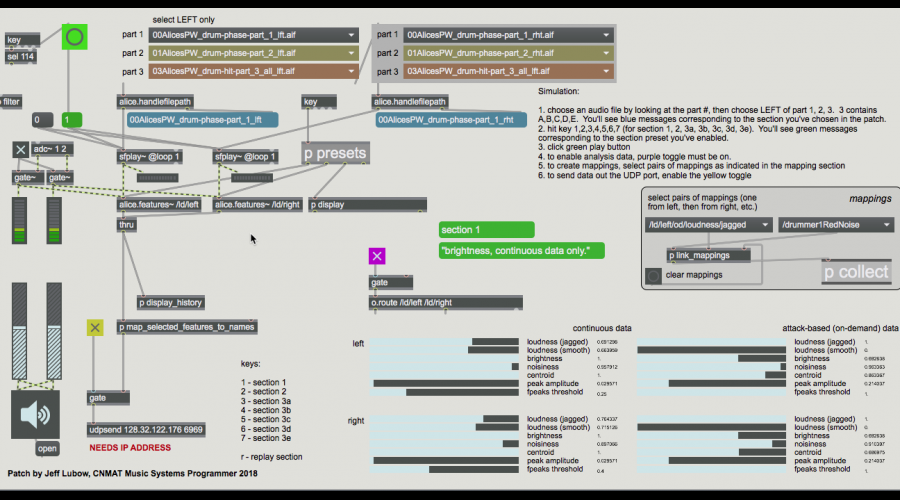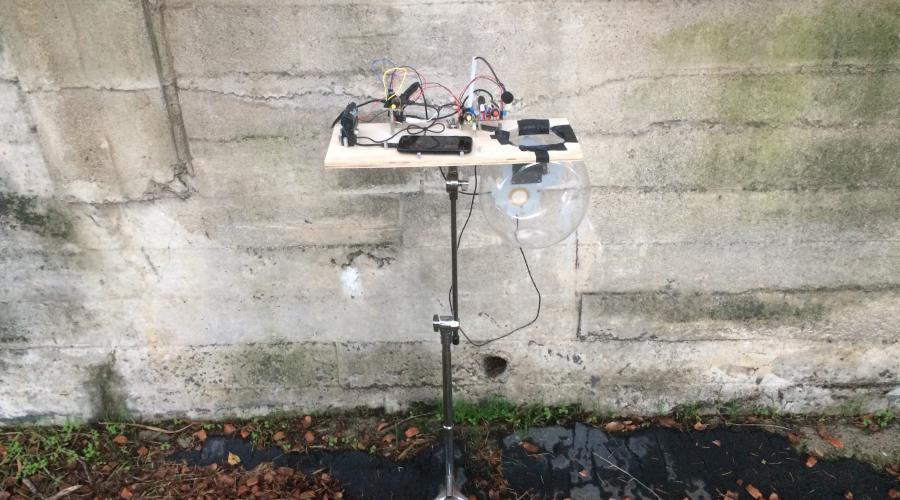
Archive
CNMAT Flashback
A look back at some items in our archives.
Cal Performances presents: Eco Ensemble
Andrea Neumann on "Inside Piano" and Echtzeitmusik
Archive Browser
Jean-François LaPorte Regent's Lecturer and Artist in Residence at CNMAT
Regent's Lecturer, Artist in Residence at CNMAT, March 10-26, 2017
Thomas Buckner Speaks about 1750 Arch Street and CNMAT
CNMAT Director, Edmund Campion interviews Thomas Buckner to discuss his involvement with the history of the property and early activities at 1750 Arch Street and the later establishment of CNMAT with David Wessel.
Sonic Writing Research
Dr. Thor Magnusson, from the University of Sussex, is in residency at CNMAT for a week this Spring. This is part of his Sonic Writing Research project which is a two-year research program that explores work and practices using new technologies for musical expression. Through tracing the historical conditions of material and symbolic design in in three interconnected strands of inscription - instruments, notation, and phonography - the project studies how established techniques are translated into new methods of musical composition and performance in digital musical media.
Tessellate: A CNMAT-OM OpenMusic Library
RELEASED (August 15, 2017)
TESSELLATE: A CNMAT-OM OPEN MUSIC LIBRARY
DOWNLOAD CNMAT-OM Tesselate Library here: http://cnmat.berkeley.edu/downloads
Link to instructions for installing OM and further CNMAT workshop materials for OM by Jean Bresson
Link to CNMAT and IRCAM/CNRS/UPMC collaborations page
CNMAT StompBox -- lots of pedals to Max
CNMAT StompBox -- a breakout box for Teensy & Max
Introduction
Early in the Fall semester 2017, CNMAT director Edmund Campion came to me with a request to build a system that would allow for multiple foot-pedal controllers to be connected to Max. The design criteria required that the system should:
ironic erratic erotic
ironic erratic erotic is a trio composed for dancer, tuba, contrabass, and motion-sensitive live electronics. It was premiered at Labor Neunzehn in Berin in May 2017 by Yuri Shimaoka (dance), Jack Adler-McKean (tuba), and Adam Goodwin (contrabass).
Kerosene Palace
Kerosene Palace, for orchestra and electronics
by Scott Rubin, for David Milnes and the University of California Berkeley Symphony Orchestra
Kerosene Palace is a work scored for orchestra and electronics, which was written for David Milnes and the University of California Berkeley Symphony Orchestra. The electronics, composed of fixed soundfiles created by the composer that were cued during the performance. The diffusion of the electronic sound was supported with equipment and funds supplied by the Center for New Music and Audio Technologies.
negative expanse (2017)
negative expanse (2017)
For amplified string quartet and 8-channel speaker environment
Composed by Jon Kulpa
Performed by Friction Quartet
Commissioned by Sounds of Science Commissioning Club
Audio production and installation by Jeremy Wagner
LARSEN
This audio feedback system is a prototype designed to digitally manage or 'shape' resultant audio feedback tones as they resonate through an open cylinder waveguide. Pressure waves are produced in the air by a loudspeaker, guided through a configuration of pipes, and sensed by a microphone on the other end. By completing the partially open waveguide loop, energy flows seamlessly between external sound and digital environments.
Freedom from Fear (2017)
Freedom from Fear (2017) for oboe, two speaker arrays (6 around the audience and 4.2 on stage) and lights Composed/electronics by Maija Hynninen Performed by Kyle Bruckmann, oboe ‘sounDome’ homemade speakers manufactured by Maija Hynninen, designed by Roberto Ortiz-Soto and Maija Hynninen, programmed by Ilya Rostovtsev. Audio production and installation by Jeremy Wagner and Maija Hynninen Special thanks to Eric Paulos and CITRIS Invention Lab staff for all help and support with the 'sounDome'.
Martin Matalon
The UC Berkeley Department of Music, CNMAT and Cal Performances present Bloch Lecturer Martin Matalon.
Anthony Paul De Ritis: Electroacoustic Music, in memorium: David Wessel
Albany Records has released a new CD by composer Anthony Paul De Ritis: Electroacoustic Music, In memorium: David Wessel
Composer Anthony Paul De Ritis began studying with David Wessel at the Center for New Music and Audio Technologies after returning from his studies at the American Conservatory in Fontainebleau. Wessel exerted a tremendous influence on De Ritis, both as a teacher and as a person. This recording of De Ritis' music is a tribute to David Wessel.
Jean Bresson: Interactive visual programming systems for music composition
Jean Bresson (IRCAM) was in residence at CNMAT as a Fulbright visiting scholar from Feb. to Aug., 2016, carrying out a research fellowship entitled "Interactive visual programming systems for music composition". The objectives of this project, framed in the development of computer-aided composition software, were to explore multimedia interactions in compositional processes, and integrate CNMAT technology and approaches in the OpenMusic environment.
John Bischoff w/ Jeffrey Lubow + Cullen Miller
CNMAT Presents an evening with John Bischoff, Jeffrey Lubow, and Cullen Miller.
Friday, May 18, 2018, 8:00pm
CNMAT
1750 Arch st., Berkeley, CA 94720
Tickets $10 general, $5 students + seniors
Program:
8pm: Lubow + Miller in a duo with interactive, spatialized synthesis.
9pm: Bischoff will perform a solo set featuring performance-reflexive electronics.
Standing Wave Analog Feedback Device
As a continuation of previous audio feedback and instrumental prototyping projects, this analog audio feedback system generates a Helmholtz-like standing wave inside a resonant semi-sphere. The electronic configuration is based on a generic bullhorn circuit (with an electret mic and two 4ohm transducers) and is filtered through a passive RC low-pass filter. Few components are required and the circuitry can be easily embedded into a variety of hardware interface designs.
Tana String Quartet
CNMAT welcomes the Tana String Quartet as an ensemble in residence for November, 2018. Public events include a concert at CNMAT on November 11th featuring new works by UC Berkeley graduate student composers and a concert at the Center for New Music in San Francisco on November 13th featuring works from the group's repertoire.
Augmented and Virtual Reality for Notation, Audio Synthesis and Performance (Giovanni Santini)
Recent developments in Augmented Reality (AR) and Virtual Reality (VR) are opening up new, unprecedented ways of representation and interaction.
Alice Unchained
Alice Unchained is a virtual chamber for chamber music. It is the third work loosely inspired by Alice in Wonderland, created by media artist Claudia Hart and composer Edmund Campion, Director, at the Center for New Music and Audio Technology, UC Berkeley. Alice mashes 3D animation, motion-captured live performance, and music performed by live and virtual musicians whose sound is analyzed in real-time and remixed in the bodies of sculptural avatars. It feeds-back the virtual and the live, blending them together in a liminal, uncanny mix.
CNMAT Multi-Purpose Array
In the Summer of 2018 CNMAT was awarded a grant to construct infrastructure for producing mobile, multi-channel concert events. We set out to construct a surround audio system, designed with robust mobility in mind, that can be rapidly deployed in numerous performance contexts. The result is the CNMAT Mobile Array, an expandable mobile infrastructure for sonic events. The system is conceived to be deployed in under an hour by a small crew of one or two people. Its speaker elements are weather protected to enable work outdoors and we have included a number of flexible rigging options to
SHAPE
Sound and Habitat Audio Prototyping Environment (SHAPE) is a collection of nature-inspired electroacoustic devices created for sound art in public spaces. It is part of an ongoing audio feedback research project at the Center For New Music and Audio Technologies. By repurposing old electronics and manufactured objects, low-cost materials are used to make interactive sound sculptures and musical instruments. Subtle gestures and actions by participants change the sound in real time.
